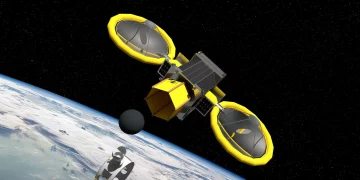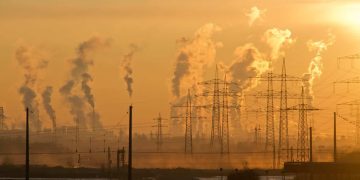Introduction
In the face of a growing global population, climate change, and dwindling natural resources, ensuring food security and promoting public health has never been more critical. The world’s agricultural systems are under increasing strain as they must meet the needs of a rapidly expanding population while facing environmental challenges such as soil degradation, water scarcity, and unpredictable weather patterns.
Sustainable agricultural technologies have emerged as a potential solution to these challenges. By incorporating practices and technologies that are environmentally responsible, socially equitable, and economically viable, sustainable agriculture offers a promising pathway to ensure global food security and improve health outcomes. This approach includes innovations such as precision farming, vertical farming, regenerative agriculture, and alternative protein sources, which are designed to optimize resource use, increase yields, and reduce negative environmental impacts.
This article explores how sustainable agricultural technologies can address the twin challenges of food security and public health. We will examine various technologies, their benefits and limitations, and the role they play in creating a more resilient and healthy global food system.
1. The Growing Challenges to Global Food Security and Health
A. Population Growth and Food Demand
The global population is projected to reach 9.7 billion by 2050, placing immense pressure on current agricultural systems to produce enough food to meet growing demand. This population increase will require a substantial rise in food production, but current farming methods are already stretched thin, leading to inefficiencies and unsustainable practices.
- Increasing Hunger: Despite technological advancements, hunger remains a major global issue, with millions of people facing food insecurity, especially in developing countries.
- Nutritional Deficiencies: Access to nutritious food is a challenge in many parts of the world, and malnutrition remains a critical concern, affecting billions globally, particularly children.
B. Environmental Pressures
Climate change, water scarcity, and soil degradation are accelerating the need for sustainable practices in agriculture. Unsustainable agricultural practices contribute to deforestation, loss of biodiversity, and the depletion of water resources, all of which exacerbate the challenges of food production and health.
- Climate Change: Altered weather patterns, extreme temperatures, and more frequent droughts are negatively impacting crop yields and food availability.
- Soil Degradation: Over-reliance on chemical fertilizers and monoculture farming has led to soil erosion, nutrient depletion, and reduced soil health.
C. The Intersection of Food Security and Health
The way food is produced, distributed, and consumed has direct implications for both food security and public health. For example, industrial farming practices that rely heavily on chemical inputs can lead to contamination of food supplies, negatively impacting human health. Additionally, the nutritional quality of food is often compromised in an effort to maximize yields, leading to a rise in diet-related diseases such as obesity, diabetes, and cardiovascular conditions.
2. The Role of Sustainable Agricultural Technologies
A. Precision Agriculture
Precision agriculture refers to the use of technology to monitor and manage agricultural operations at a micro-level, using data to make informed decisions that optimize the use of resources like water, fertilizers, and pesticides.
- Benefits: Precision farming technologies, such as drones, sensors, and satellite imagery, help farmers make data-driven decisions that reduce resource waste, minimize environmental impact, and increase crop yields.
- Impact on Food Security: By increasing efficiency and reducing losses, precision agriculture can help produce more food using fewer resources, contributing to improved food availability, especially in regions with limited access to arable land.
B. Vertical Farming
Vertical farming involves growing crops in stacked layers or vertically inclined surfaces, often in controlled indoor environments. This method uses hydroponic, aeroponic, or aquaponic systems to grow crops with minimal water and soil.
- Benefits: Vertical farming is space-efficient, uses less water, and can be implemented in urban areas, where land is scarce. It also allows for year-round production of fresh food, regardless of climate conditions.
- Impact on Food Security: By bringing food production closer to urban populations, vertical farming can reduce food transportation costs, decrease carbon footprints, and increase the availability of fresh produce in cities.
C. Regenerative Agriculture
Regenerative agriculture emphasizes practices that restore and enhance the health and biodiversity of the soil, focusing on long-term sustainability rather than short-term yields. Key practices include crop rotation, agroforestry, no-till farming, and the use of cover crops.
- Benefits: Regenerative practices improve soil fertility, increase carbon sequestration, enhance water retention, and support biodiversity, all of which contribute to more resilient agricultural systems.
- Impact on Food Security: Healthy soils lead to more productive land in the long term, allowing for consistent food production even under changing environmental conditions.
D. Alternative Protein Sources
The global demand for animal-based protein is a major driver of environmental degradation, with livestock farming contributing to deforestation, greenhouse gas emissions, and excessive water usage. Alternative protein sources, such as plant-based proteins and lab-grown meat, offer more sustainable and environmentally friendly options.
- Benefits: Alternative proteins are often more resource-efficient and have a lower environmental footprint than traditional animal agriculture. They also offer potential health benefits, including lower saturated fat content and fewer foodborne illness risks.
- Impact on Food Security: By diversifying protein sources, alternative proteins can help address food security by providing more sustainable and accessible protein options to global populations, particularly in regions where animal-based proteins are expensive or scarce.
3. Health Benefits of Sustainable Agricultural Practices
A. Reduced Chemical Exposure
Sustainable agricultural technologies aim to reduce or eliminate the use of harmful chemicals like pesticides, herbicides, and synthetic fertilizers. These chemicals are often linked to health problems, including cancer, hormone disruption, and neurological disorders.
- Health Benefits: By minimizing chemical inputs, sustainable farming practices can produce healthier food with fewer toxic residues, reducing the risk of chemical exposure to both consumers and farmworkers.
B. Nutrient-Dense Food
Sustainable farming methods, such as agroecology and organic farming, often focus on growing diverse crops that are rich in nutrients and free from synthetic additives. These practices can lead to more nutrient-dense foods, improving the nutritional quality of the food supply.
- Health Benefits: Increased access to nutrient-rich foods helps prevent malnutrition, improves immune function, and supports overall health. In particular, nutrient-dense crops can combat the widespread issue of micronutrient deficiencies in developing regions.
C. Reduced Antibiotic Resistance
Intensive livestock farming often relies on antibiotics to prevent disease in overcrowded conditions, contributing to the rise of antibiotic-resistant bacteria. Sustainable farming practices, such as pasture-based systems and responsible antibiotic use, can reduce the overuse of antibiotics.
- Health Benefits: By reducing the risk of antibiotic resistance, sustainable agriculture helps ensure the effectiveness of antibiotics in treating infections, thereby safeguarding public health.

4. Challenges and Barriers to Implementing Sustainable Agricultural Technologies
A. Cost and Accessibility
While sustainable farming technologies offer long-term benefits, the initial cost of adopting these systems can be high. For smallholder farmers, especially in developing countries, the investment in new technologies may be out of reach.
- Solutions: Governments, NGOs, and the private sector can collaborate to provide subsidies, financing options, and technical support to help farmers transition to sustainable practices. Public-private partnerships and international aid could also play a role in improving accessibility.
B. Knowledge and Education Gaps
The successful implementation of sustainable agricultural technologies requires access to education, training, and technical expertise. Many farmers, especially in rural areas, may not have the knowledge or skills to effectively adopt these new practices.
- Solutions: Agricultural extension services, training programs, and knowledge-sharing platforms can help farmers learn about sustainable practices and how to implement them in their own contexts. Governments and NGOs can invest in agricultural education to bridge this gap.
C. Policy and Regulatory Support
In many countries, agricultural policies and subsidies are still geared toward conventional farming methods, which prioritize high yields and short-term profits over long-term sustainability.
- Solutions: Governments must revise policies to support sustainable agriculture, including offering incentives for green technologies, creating fair trade markets, and providing research funding for innovative farming practices.
5. The Future of Sustainable Agriculture in Global Food Security and Health
As the world faces mounting pressures on its food systems, sustainable agricultural technologies present a compelling solution for improving food security and public health. By adopting innovative practices and technologies, we can reduce environmental impacts, improve food quality, and ensure that future generations have access to nutritious and affordable food.
In the coming decades, it is crucial for governments, industries, and communities to invest in and promote sustainable agriculture as a pathway to a healthier, more food-secure world. Continued research and innovation in agricultural technologies, alongside strong policy support, will be key to achieving these goals.
Conclusion
Sustainable agricultural technologies have the potential to transform the way we produce and consume food, offering solutions that address the critical challenges of food security and public health. Through innovations like precision farming, vertical farming, regenerative agriculture, and alternative proteins, we can create more resilient food systems that are better for the environment and human health. However, overcoming the challenges to widespread adoption, such as cost, education, and policy support, is essential to ensuring that these technologies can fulfill their promise of a healthier, more sustainable future.


















































Discussion about this post